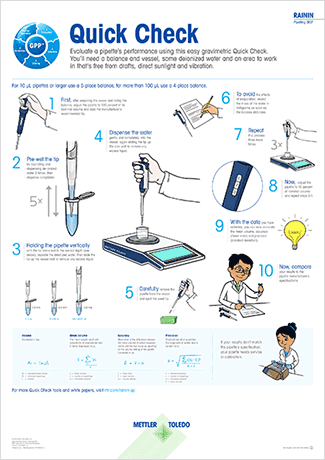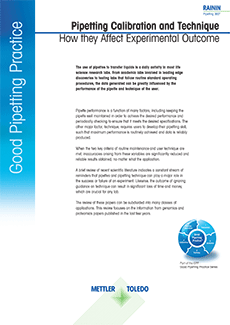Forward pipetting is the standard pipetting technique and the best choice for aqueous samples. For viscous and volatile samples, reverse pipetting delivers better accuracy.
To forward pipette, push the plunger down to the first stop while holding the pipette outside the liquid. Then, immerse the tip 2-10mm deep into the liquid you are working with – no deeper. Release the plunger slowly to full extension to aspirate the complete liquid volume. To dispense into your target vessel, move the pipette into the vessel, then press the plunger at an even rate through the first stop all the way to the second stop – as far as the plunger goes. With the plunger fully pressed, lightly drag the tip of the pipette up the wall of the vessel to "touch off." This helps completely dispense the full liquid volume. Release the plunger, eject the pipette tip, load a new pipette tip, and repeat.
To reverse pipette, push the plunger all the way down through the first stop to the second stop – as far as the plunger goes. Then, immerse the tip in liquid and slowly and evenly release the plunger to aspirate. Move to the receiving vessel and press the plunger ONLY TO THE FIRST STOP to dispense the correct volume. A small residual volume will remain in the pipette tip. Move the pipette over a discard-dispense vessel and press the plunger the rest of the way down to the second stop, also called the "blowout" stop, to release any remaining liquid.
Release the plunger, eject the pipette tip, load a new pipette tip, and repeat.







.png/_jcr_content/renditions/cq5dam.web.1280.1280.png)










.jpg/_jcr_content/renditions/cq5dam.web.1280.1280.jpeg)





